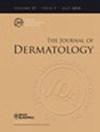NEVIGRAV Study: A Case–Control Analysis on Changes in Melanocytic Nevi During Pregnancy
Abstract
Pregnancy can influence modifications and appearance of melanocytic nevi, but studies report inconsistent findings, often lacking standardized methods and comparison groups. This study evaluates dermoscopic changes in nevi and the development of new melanocytic lesions in pregnant women using full-body photography and digital dermoscopy. Nevigrav is an observational case–control study conducted at two university dermatology centers, involving 85 participants (45 pregnant women and 40 controls) with 1614 lesions analyzed. Participants were asked about recent sun exposure or tanning habits. Enrollment was predominantly conducted in autumn and winter months to minimize ultraviolet (UV) exposure as a confounding factor. Total body photography revealed no new lesions in pregnant women when compared to controls. Dimensional growth was observed in the abdomen (p = 0.049) and the back (p < 0.001) between the first and second trimesters, with further abdominal growth in the third trimester (p < 0.001). At the third trimester, pigmentation changes were significant, with phototype III maintaining or increasing pigmentation and phototype II showing a reduction of pigmentation (χ2 = 32.33, p < 0.001). Regional pigmentation differences were noted in the mammary (p = 0.02), abdominal (p = 0.004), and thigh (p = 0.007) areas. No changes in symmetry or dermoscopic nevi patterns, including dots or globules, were observed. Pregnancy does not increase nevi count but may cause size and pigmentation changes, particularly in the abdomen, influenced by phototype and body region. No new dermoscopic patterns or symmetry changes were found.


 求助内容:
求助内容: 应助结果提醒方式:
应助结果提醒方式:


